How to do affiliate marketing? That’s the most important question facing people interested in online business models.
If you stop to think about it, affiliate marketing is in some ways like starting a business. You have the distinct advantage of not holding inventory and typically don’t need to hire employees, but you’re still setting up an online operation.
No matter what approach you take, whether writing blog posts or running ads, there are certain steps you’ll need to take to help you find out how to use affiliate marketing to make a living. That means you need to take strides to ensure you prepare yourself for what lies ahead.
In this article, we’ll look at a step-by-step method you can use to learn how to do affiliate marketing. This will provide a platform for your efforts, and can help give you a leg up when you’re starting out.
Whether you decide to go it alone, partner with others, or look for affiliate marketing jobs, these steps will prepare you for what’s ahead.

Don’t wait for someone else to do it. Hire yourself and start calling the shots.
How to Do Affiliate Marketing in 6 Steps
When learning how to become an affiliate marketer, it’s important to know where to start. It’s all too easy to get the cart before the horse, and that metaphor covers a variety of scenarios. Finding merchant partners, high commision affiliate programs, or affiliate marketing jobs that pay well and are consistent requires a great deal of up-front work before you’re ever in touch with a merchant.
So to help you build your online audience and find the right niche, here’s a six-step checklist you can use that can help give you a solid foundation as you start as an affiliate.
1. Choose a Niche
Every affiliate marketer has a niche in which they try to influence their audience. But if you’re too greedy and try to speak to too many niches, you could risk overextending and making your efforts ineffective.
So finding out who you’re going to target is the essential first step. But just because it comes first doesn’t make it easy.
Choosing your niche is one of the most crucial parts of starting your affiliate marketing efforts. The wrong niche will make it harder to sell, and the right niche will make it easier.
Finding your niche is one of the most crucial parts of starting your affiliate marketing efforts. The wrong niche will make it harder to sell, and the right niche will make it easier.
So how do you find out which niche is the best one for you?
To start with, you can do a short self-assessment. As affiliate marketers are meant to be reliable advocates for a product or brand, you want to make sure that you are in the right headspace.
Start by asking questions like:
- What topics am I passionate about?
- Do people search for my chosen niche?
- Will demand for my niche stay consistent?
- Is there a lot of competition for my niche?
- Are there affiliate programs that work within my chosen niche?
These questions will help you find out if the product you’re considering is something you want to promote regularly. No matter what type of affiliate marketing tactic you ultimately choose, these are the make or break questions.
It should also be said that passion shouldn’t be the only reason why you become an affiliate marketer. A site like KitchenFaucetDivas probably didn’t start as a project of passion, but that doesn’t make it any less profitable.
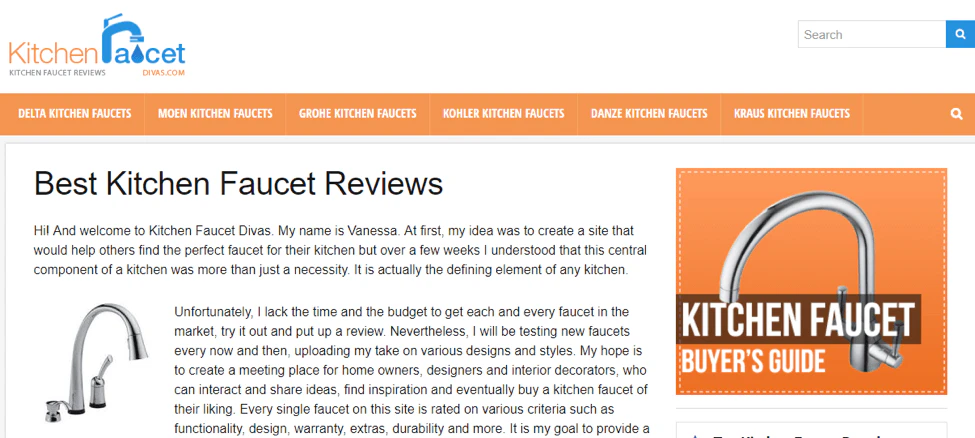
Someone has to write those reviews, right?
So keep in mind that finding the right affiliate products to sell isn’t always about fun. It’s about profit.
Len Markidan of Podia says,

“If you don’t genuinely think that a product will improve people’s lives, don’t sell it! This is critical to long-term success as an affiliate. It only takes one bad recommendation to lose someone forever. But by taking the time to do your research, try every product you’re thinking about promoting, and think carefully about whether it’s a good fit for your audience, you can build a successful business by being a trusted source of useful recommendations.”
2. Evaluate Market Demand
It’s also important to evaluate the market demand for your affiliate niche. Doing so will help you identify items that consumers are willing to pay for. With that knowledge, you can start marketing products that convert shoppers, earning you commissions.
To start assessing demand for a product, the best place to go is usually a tool like Google Trends. This tells you how often Google users search for a particular topic on a 0-100 scale. It also gives you a regional breakdown, and some suggested topics as well.
For example, let’s see how many people actually search for the phrase ‘kitchen faucet’ on Google:
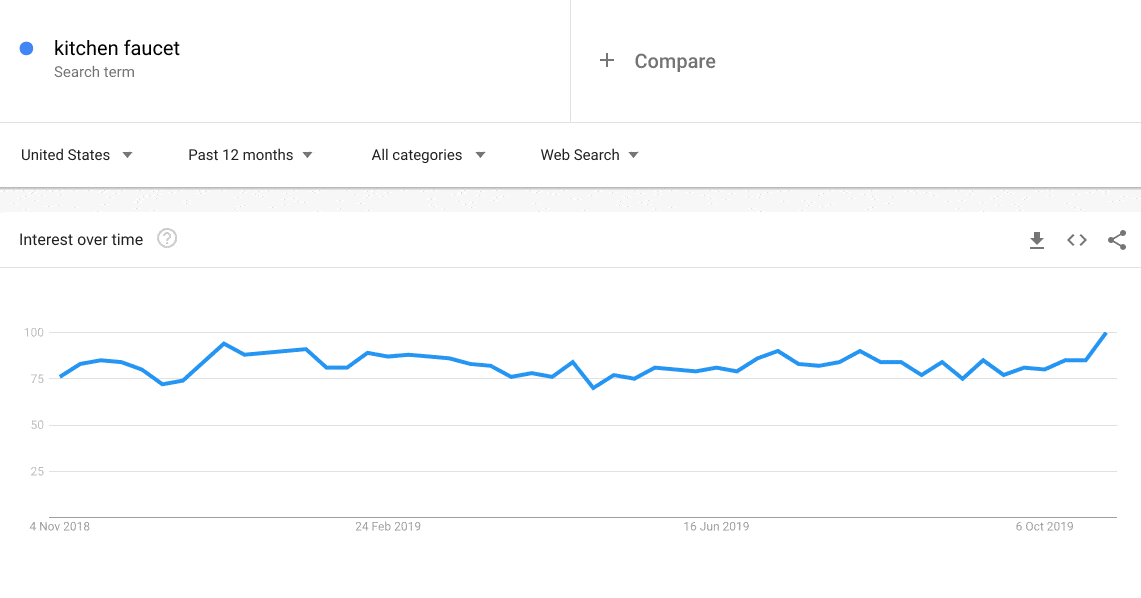 It’s relatively consistent since the past 5 years. That means those kitchen faucet reviews have a good potential to make money through affiliate marketing.
It’s relatively consistent since the past 5 years. That means those kitchen faucet reviews have a good potential to make money through affiliate marketing.
So whatever niche you’re considering, start by plugging it in and seeing if there’s consistent demand. This is one of the most consistent tests you can run when determining which affiliate products to sell. Many affiliate marketing items will have moderate degrees of consistency, with spikes around the holidays.
3. Analyze the Competition
The next step is to determine whether or not there’s a lot of competition in your chosen niche, and there are a couple of ways to go about this.
A simple way is to use a keyword research tool like Ubersuggest to help you see how competitive particular Google searches are.
Let’s keep running with this kitchen faucet example, to show you how it works. Start by plugging in your search term, and then click ‘Look Up’ to see the results.
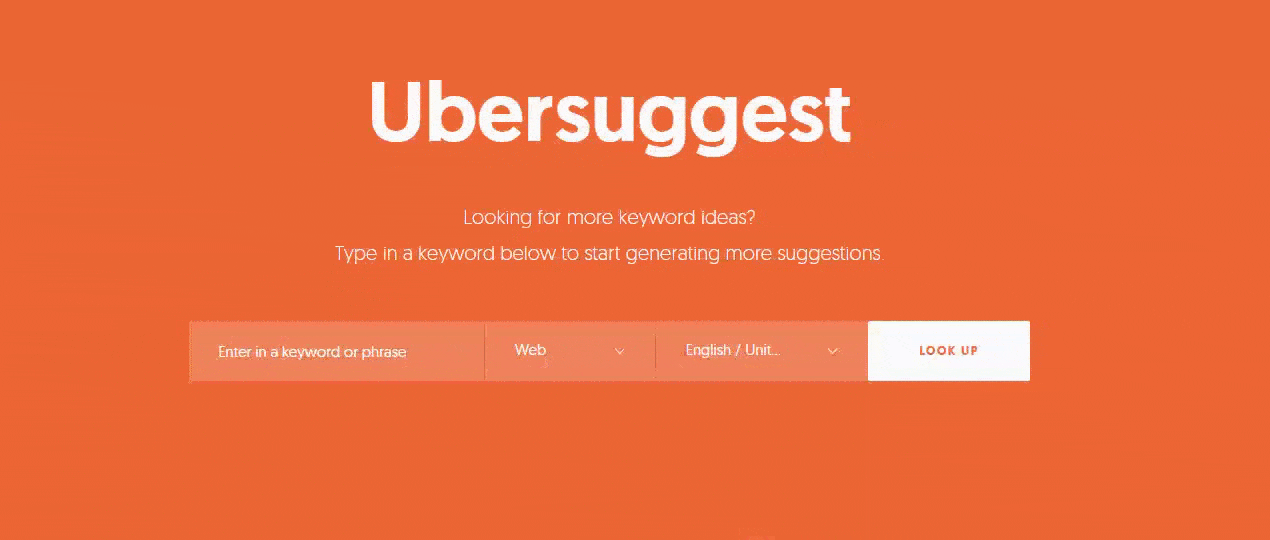
As you can see, on the right side of the results you’ll see an indicator that says ‘Competition’. On Ubersuggest, this indicator ranges from 0-1, with 1 being the highest level of competition.
So with just a few clicks, you can find out what you’re up against in your niche. You can also see a variety of suggested searches that are related to your niche, as well as how competitive they are.
The second way to research competition levels is to use a service like Clickbank. For this purpose, click on the Affiliate Marketplace option on the home screen.

From there, you’ll see an option to input a search term. Again using the kitchen faucet as an example, here’s how you use this feature:
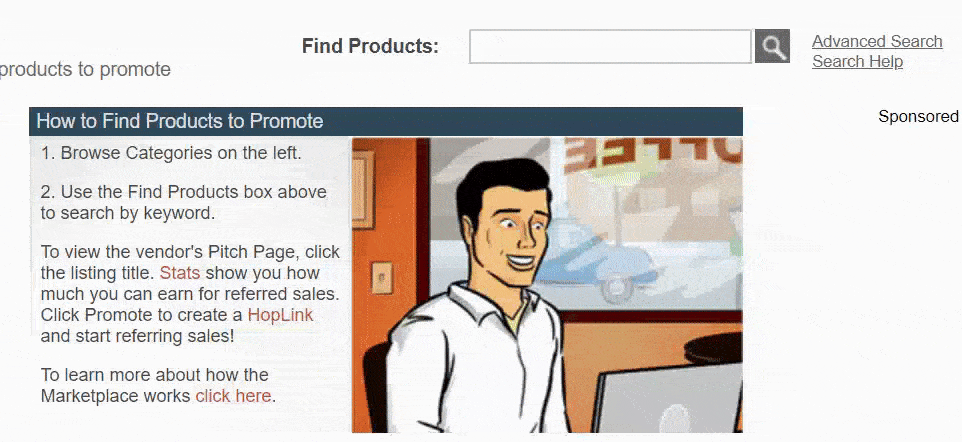
In the search results, you’ll see a section that I’ve highlighted in the example above called Gravity. On ClickBank, Gravity is a measurement of how high demand is for a product that’s on a 100 point scale. The lower the Gravity, the harder it will be to sell your product.
When you combine all of these approaches, you should be able to get an adequate view of how well your chosen niche will perform. Too much competition and not enough demand is a recipe for disaster, so be diligent in this process.
An excellent example of an affiliate marketer that’s clearly done their homework in their niche is the highly successful site the Points Guy. The site centers around travel-oriented reviews and guides, but also provides curated news updates for those already on the go. They also promote credit cards, which is where they make their money.

This site gets more than 2.5 million unique monthly visitors, and for every successful card signed up for, they receive anywhere from $50-$400. As both the travel industry and the credit card industry can be competitive, this is the kind of success that makes you pay attention.
And to round out their approach, they also run ads for their content to help bring in more traffic and make more money.
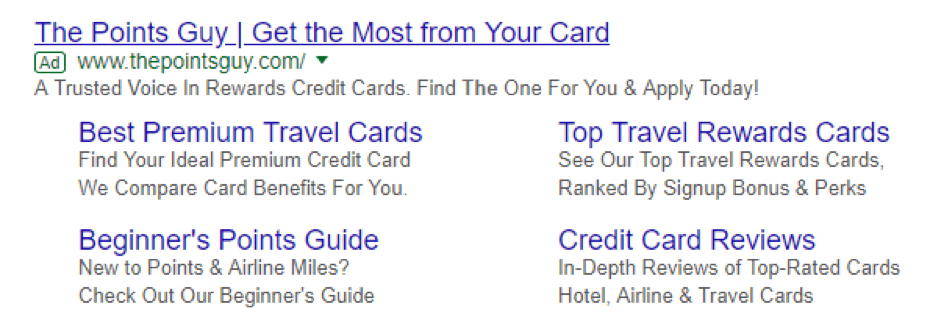
At the very least, this shows the importance of finding the right affiliate products to sell in your niche. Get this step right, and you’ll be giving yourself the best chance to make some money as an affiliate marketer.
4. Research Affiliate Programs
After you’ve picked a niche, it’s time to find out which program out there can help you promote products in your niche. This is where you take a step deeper into your study of how to become an affiliate marketer.
Affiliate marketing programs are sites that act as the middleman between merchants and affiliates. Since it can be hard for merchants and affiliates to find each other, these sites act as a gateway for the relationship to begin.
With that, I’ll bring up some key questions that you’ll need to have answered while you’re figuring out how to become an affiliate marketer. This is an essential checklist that you should consider before you proceed with a particular program.
- What merchants are using the affiliate program you’re looking at?
- How much commission are you likely to make from your program?
- Do you want to be associated with the program, and the brands selling through it?
- What kind of support does the program provide you with?
Keep in mind that this is another step that can make or break your success as an affiliate marketer. In other words, your program is the bridge that helps you find profitable partnerships. Don’t skip out on it.
5. Pick Your Affiliate Marketing Methods
Two most popular methods that affiliate marketers adopt include:
- Making websites like blogs or marketplaces.
- Running paid ads.
While these are only a couple of options, they’re the best way to do affiliate marketing. So, we’ll break down how to set up each.
First up, let’s build a website.
While there’s some discussion over whether or not affiliates need a website at all, there are so many benefits that it’s almost pointless not to make one when you’re trying to get the knack of how to do affiliate marketing.
It doesn’t matter if you’re working with low or high commision affiliate programs, websites can help you be successful.
Plus, if you want to look for affiliate marketing jobs in the future, having your own affiliate site is a perfect resume builder.
So when you search for ways to build a website, you’re going to get a lot of competing opinions about which option is the best. Should you go with a free option like Wix or WordPress.com, or is it better to build your own by using a hosting service?
While the ultimate hosting choice is up to you, you’ll want to find one that offers a reliable service and a good experience all around.
Many of these hosting companies offer:
- Reliable hosting
- A domain name
- A professional email address
And if you’re feeling overwhelmed by the process of starting a website, some of these services even offer step-by-step tutorials on their site that help get you started.
If you’re starting a blog, your best bet is to find a template theme that helps you create a friendly user experience. There are thousands of themes to choose from, so pick the one that suits you best.
Once you host your site and pick a theme, all you have left to do is design it to your liking. You can use custom or stock photos, and make sure that it’s clear what your site has to offer your audience.
From there, it’s time to start creating the content you want to share with your audience.
6. Create and Publish Top-Notch Content
The phrase ‘content is king’ gets thrown around a lot in marketing, and there’s a good reason for that. In many ways, the Internet is just a collection of content. If you don’t contribute, people have no reason to come to you.
As we’ve already seen, that content can be as simple as this blog post. How you ultimately deliver value is up to you.
But what types of content can you create that will help you stand out as a trustworthy and valuable affiliate marketer? Even if you’ve got the right niche and a flawless website, you need something to build your audience.
When considering what type of content to create, you’ve got a lot of options. In fact, one blog compiled 113 different types of content that can be created and shared. With all that variety, where do you start?
While to some degree this boils down to the ideas that interest you the most, there are at least three good starting places familiar to affiliate marketers. These can ultimately lead to success, so we’ll dive into each.
Product Reviews
One of the most effective content strategies is to write reviews for different products and services in their niche. Brands are always looking for product reviews that convert customers, so this can be a profitable place to start.
When done well, it can provide a seamless transition into affiliate marketing efforts, and can be a great way to generate income..
For example, TheBestVPN is a site that reviews the most popular Virtual Private Networks, or VPNs, on the market. For audiences interested in cybersecurity and ensuring the protection of their information, this type of website is a goldmine of information.
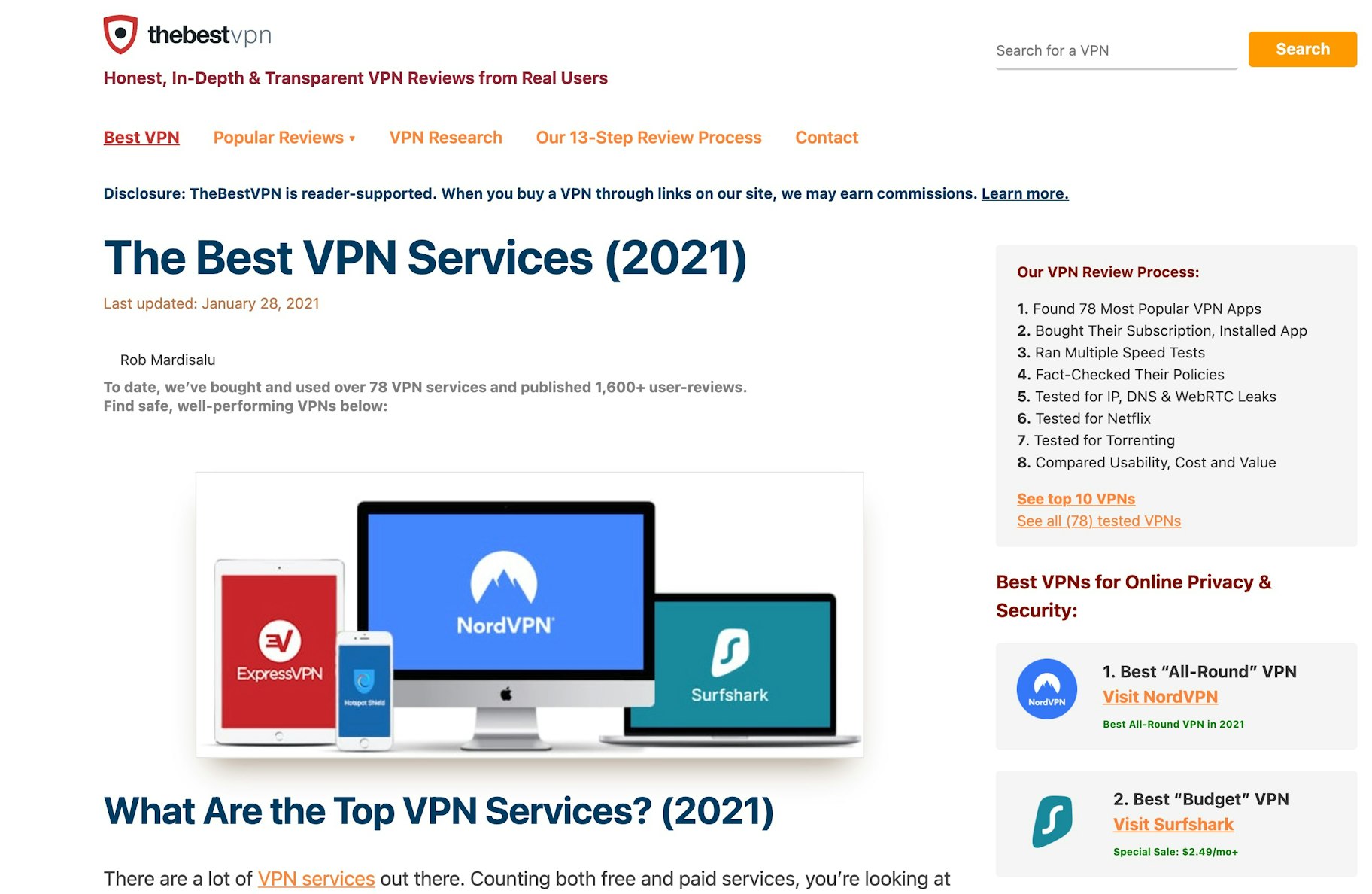
With each review, there’s an option for readers to go to the site and learn more about the VPN. As you might expect, this link is an affiliate link that attributes each referred buyer to TheBestVPN’s website.
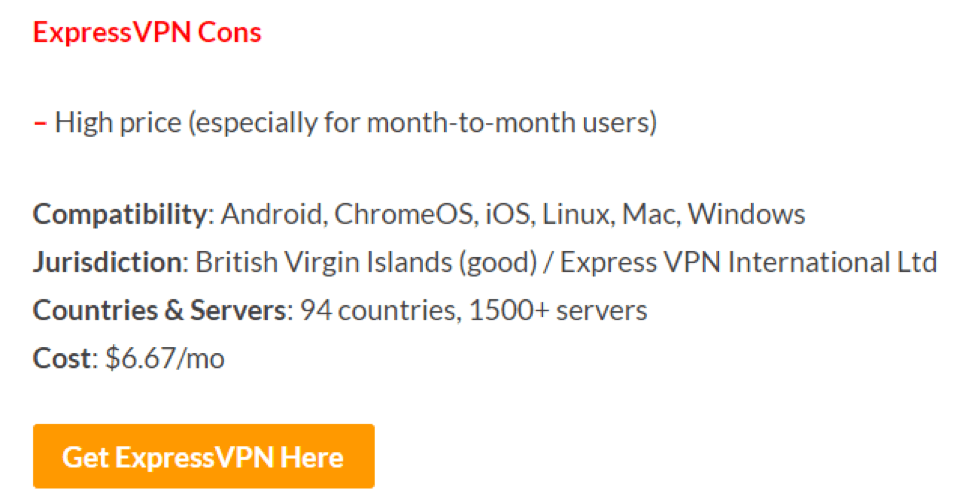
By simply focusing on product reviews, the site positions itself as a high-authority source for newcomers to the world of cybersecurity. Everyone involved gets something from the affiliate relationship, which completes the perfect model of affiliate marketing.
Blog Posts
In a similar vein to product reviews, blog posts are another way that you can start building trust and making inroads in your chosen niche. More importantly, blog posts can help you boost sales over time as you master how to become an affiliate marketer, which is your end goal.
By addressing common questions or problems in your target market, you’ll be positioning yourself to make recommendations down the line.
The big key with writing blog posts is consistency. You need to post consistently, and you need to keep a single voice that provides high-quality ideas and tips to your reader.
A great affiliate brand that’s done an excellent job of developing an innovative blogging approach is the site Top Ten Reviews.
While it sounds at first glance that this is just another review site, it’s actually a lot deeper than that. It’s a review comparison site that’s all delivered in blog posts and slideshares, like this roundup on hot tubs:
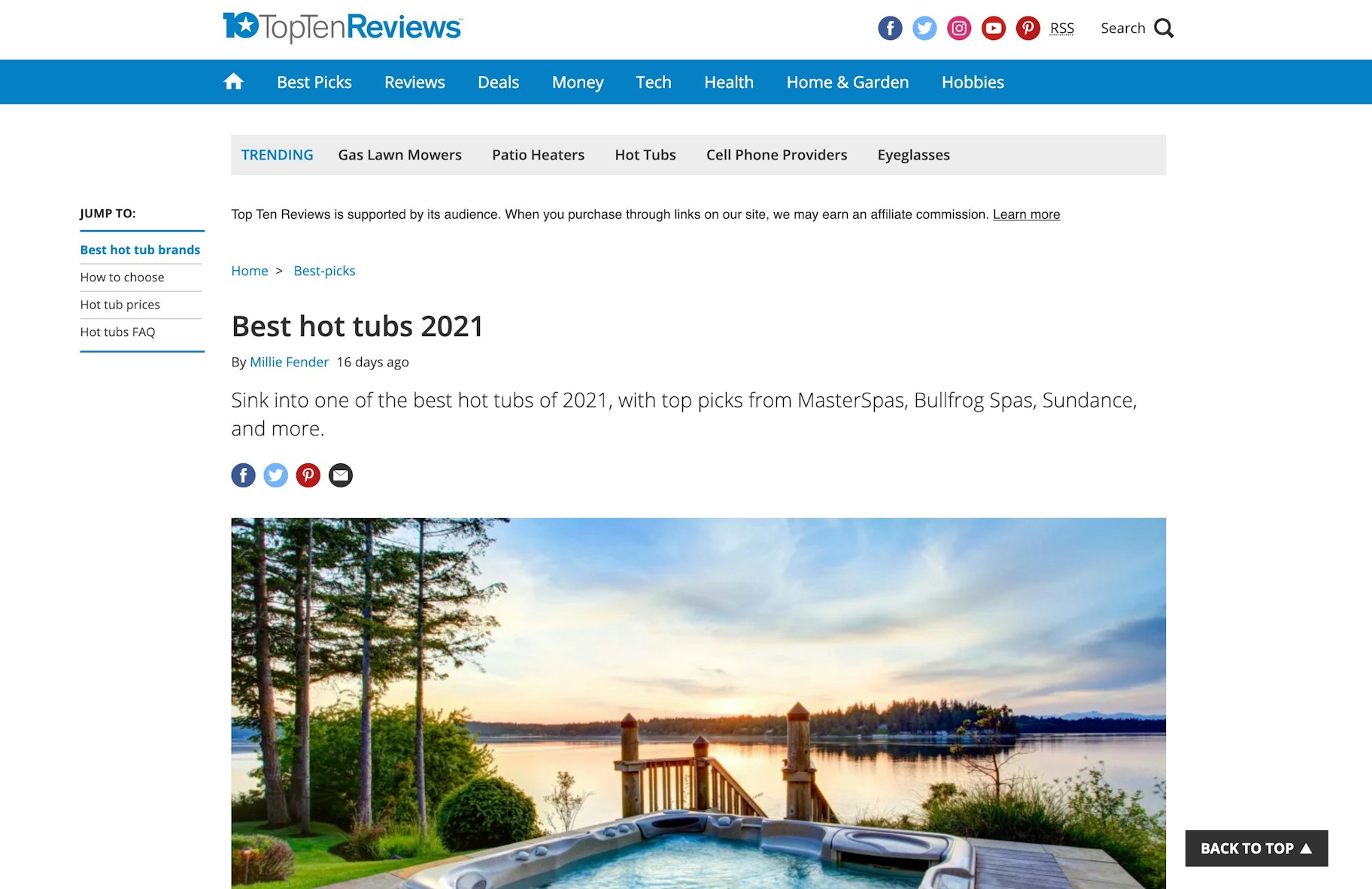
By creating and delivering unique content, they’ve developed an engaged audience and dominate their niche. All of this is done as an affiliate too.
So if you’re struggling with a place to start and don’t want to do product reviews, take the leap into blogging. Offer solutions and share your tips as much as possible.
Guides
The final type of content you can focus on creating is an informational product that you can use as a hook to get people interested in more of what you have to say. Just like the previous two types of content, helpful guides can ultimately lead to increased sales and more money in your pocket.
This can be an ebook, email series, webinar, or any other type of extensive, in-depth look at a particular topic. As long as it’s accurate and helpful, you’ll be one step closer to gaining trust in your niche.
In time, you can also use this technique to help your audience build interest in the affiliate product that you sell.
A good, simple example of this comes from the affiliate blog PC Part Picker. They offer a wide variety of guides that help newcomers and veterans build a computer that meets their needs.
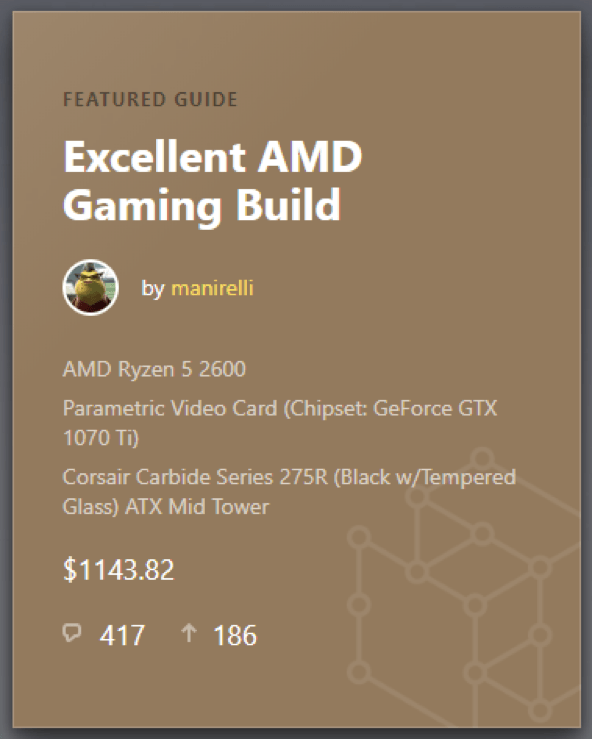
This provides constant engagement with their audience with high-value content. And of course, with each purchase made from their recommendation, The Wire Cutter gets a piece as the affiliate marketer.
How to Do Affiliate Marketing Without a Website
As we’ve seen all along, building a website is just one option when it comes to the best ways to do affiliate marketing. Running ads is another. Ads can help you be successful, especially for high commision affiliate programs.
So what if you only want to use paid ads to push people to your merchant partner’s site? In that case, you don’t really need a website.
Instead, you’ll need to set up an account to create ads in, which means you’ll need to use Google ads, Facebook ads, or even Bing ads depending on your audience.
First, let’s show you how to get started on Google Ads. To get started, you’ll need to head over to the Google Ads homepage and click the Get Started button.
You’ll be sent to a screen that asks for your email address and the website you’ll be sending ads to.
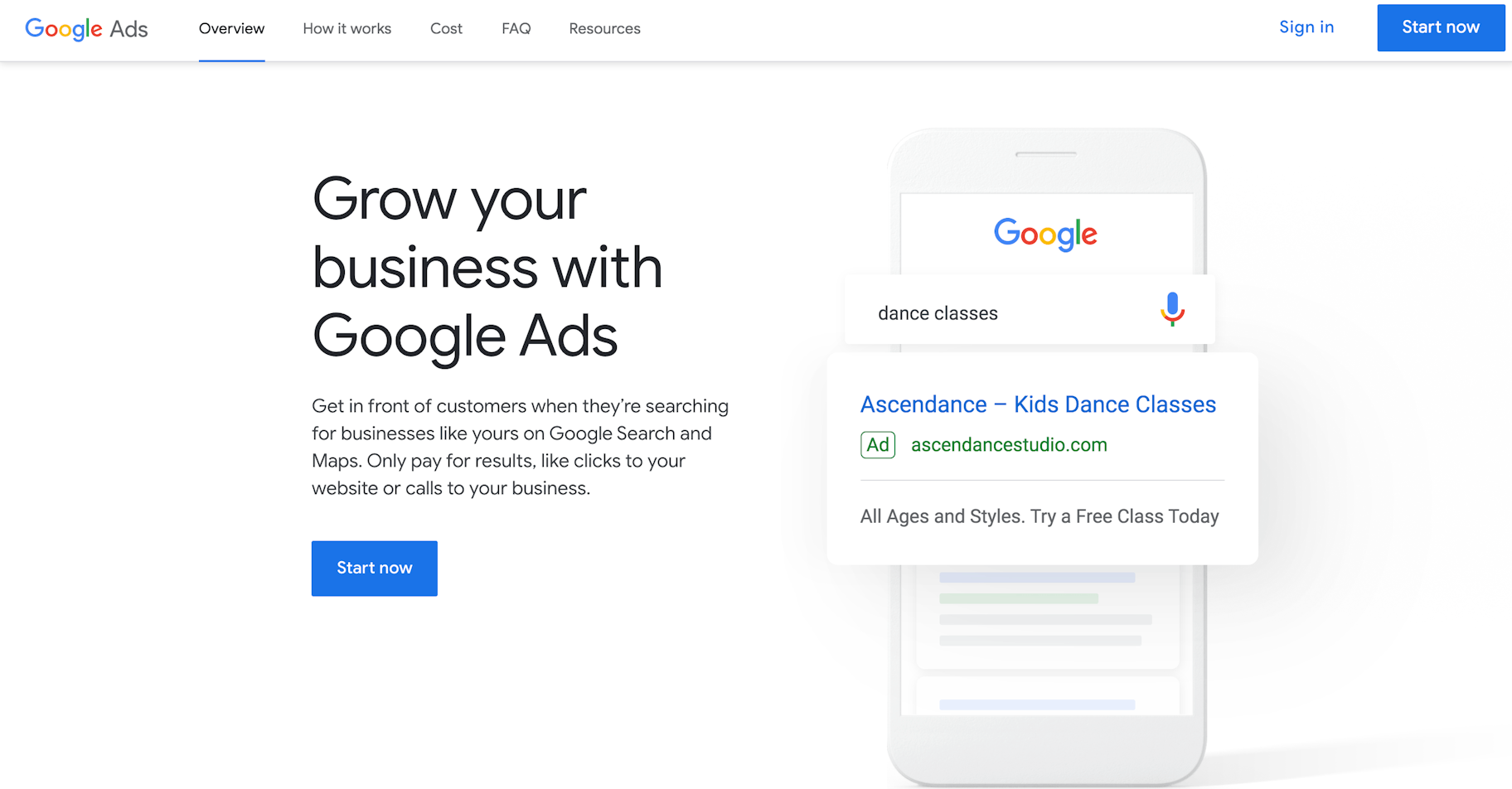
Next, you’ll be asked to sign in if you’re creating this with a Google account.
From there, you’ll be walked through the process to target and complete your ad, including images and copy. First, you’ll need to pick a goal for your ad.
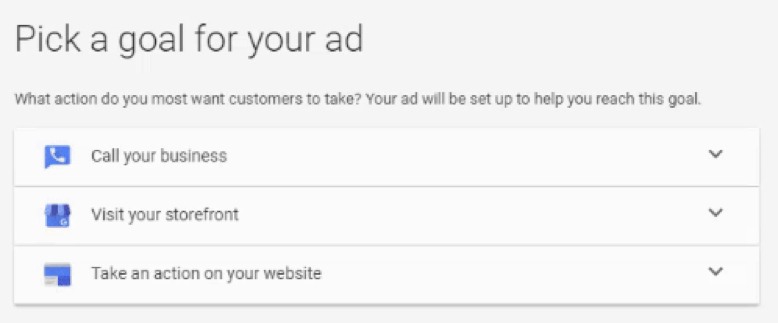
Since you’re most likely trying to get users to buy a product, you’ll want to select the ‘Take an action on your website’ option. Even if you’re not the website’s owner, you can direct and track traffic accordingly.
From there, you’ll need to select the geographical location that you want to advertise in. This can be as broad or as narrow as you want it to be.
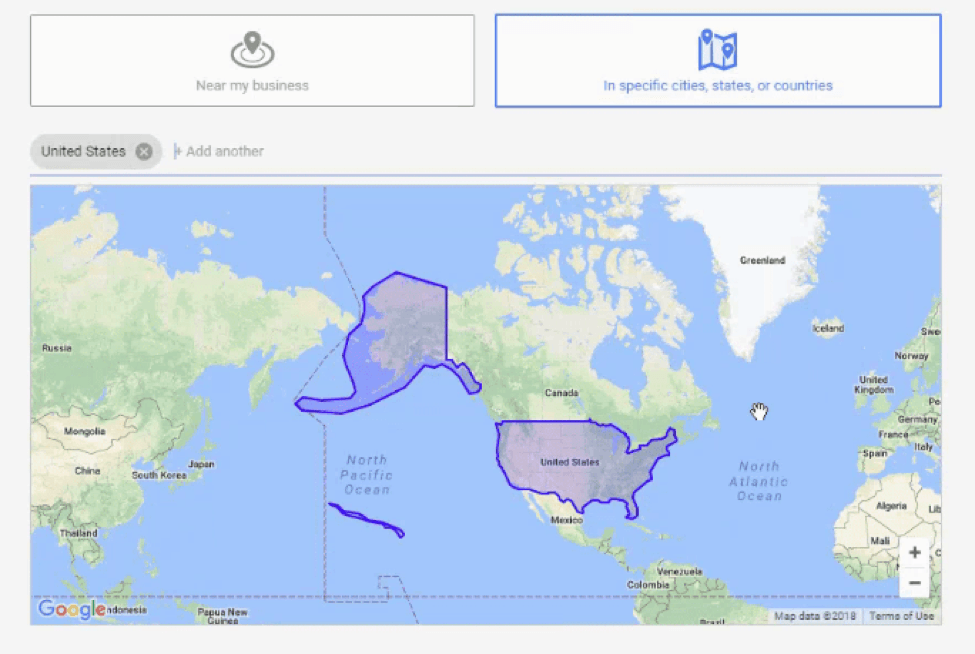
Once you’ve pinned down the location, you’ll want to further define what it is you’re selling. Based on the content of the website, Google Ads will suggest products and services you can include that help narrow or expand your audience.

Once you’ve finished defining your product or service, the next step is to create the final ad. On the next screen, you’ll be able to edit the copy of your ad and finalize how it appears on a search engine results page.
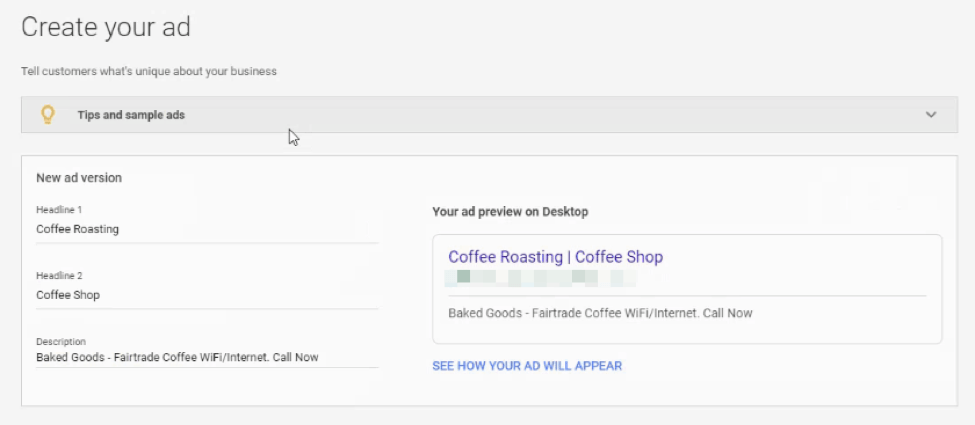
Once you’re done, all that’s left is to finish publishing your ad and make adjustments as needed. At this point, you’ll have successfully created both your platform and your content.
Another great option is to set up Facebook Ads to reach your audience as well. All you need to do that is a Facebook profile, which you may already have. If not, it’s easy to set one up.
Once you’ve logged into your Facebook account, head over to the dropdown menu in the top right of your Newsfeed. You’ll want to click the “Create Ads” option.
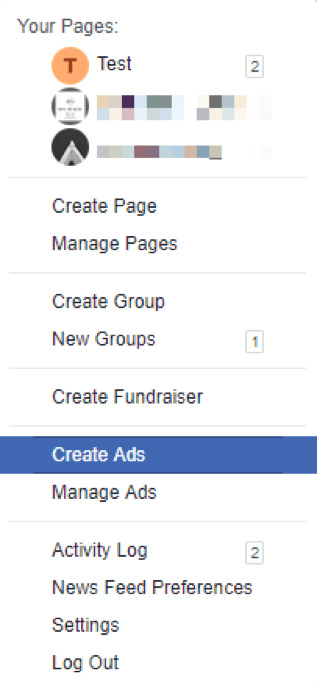
This will redirect you to Facebook’s dedicated Ad Manager. There’s plenty to explore and experiment with, but your first step is to simply set up your ad. Much like Google Ads, you’ll be walked through that process starting from the home screen. Just find this section to get started:
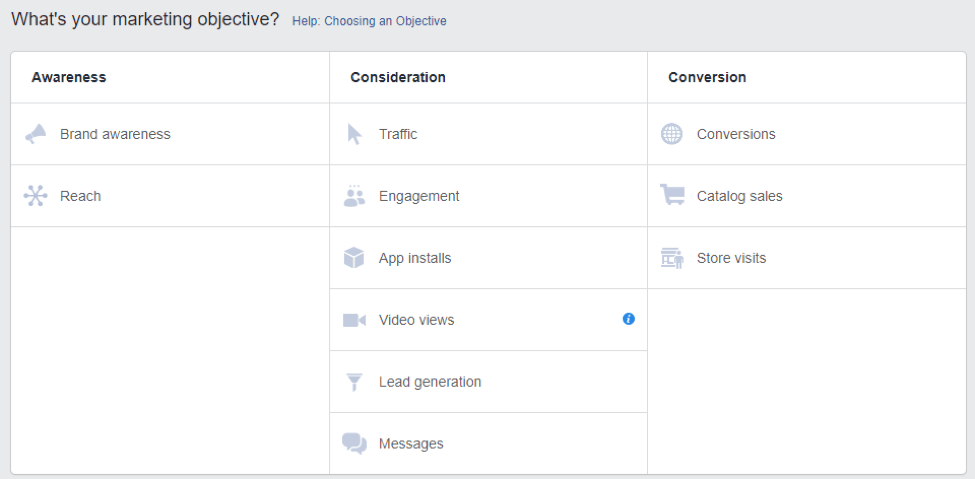
You’ll select your objective, create your ad, and fine-tune your schedule and budget based on your experimentation. Much like Google Ads, you’ll need to take some time to familiarize yourself with the platform and what your audience is looking for.
But not all ads are the same. Just like blog content, there are different ways you can approach creating an ad. Just to give you an example, let’s look at one of the options Google has to offer.
Google Shopping Ads
Since ads are by far one of the more popular ways affiliate marketing content gets created and shared, it’s worth taking a longer look at your content options that maximize their effect.
And since your task as an affiliate marketer is to sell products, what better way to do it than with Google Shopping Ads?
Google Shopping Ads are the options you see at the top of the search engine results page when you’re looking for a certain product. Here’s an example of what that could look like when searching for some men’s shirts:
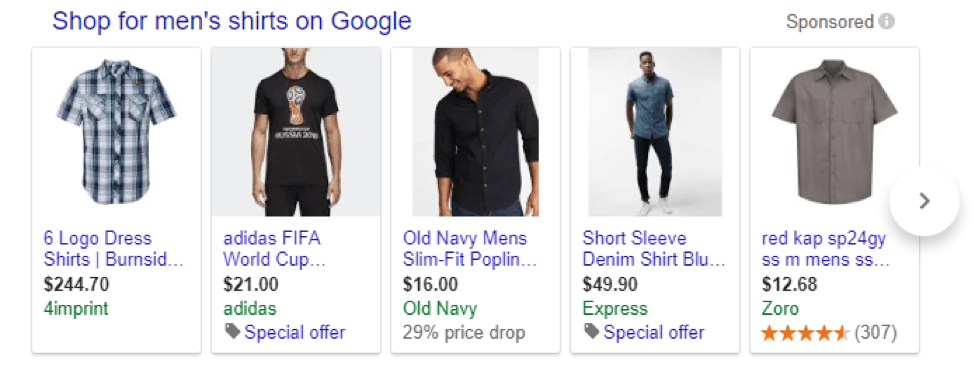
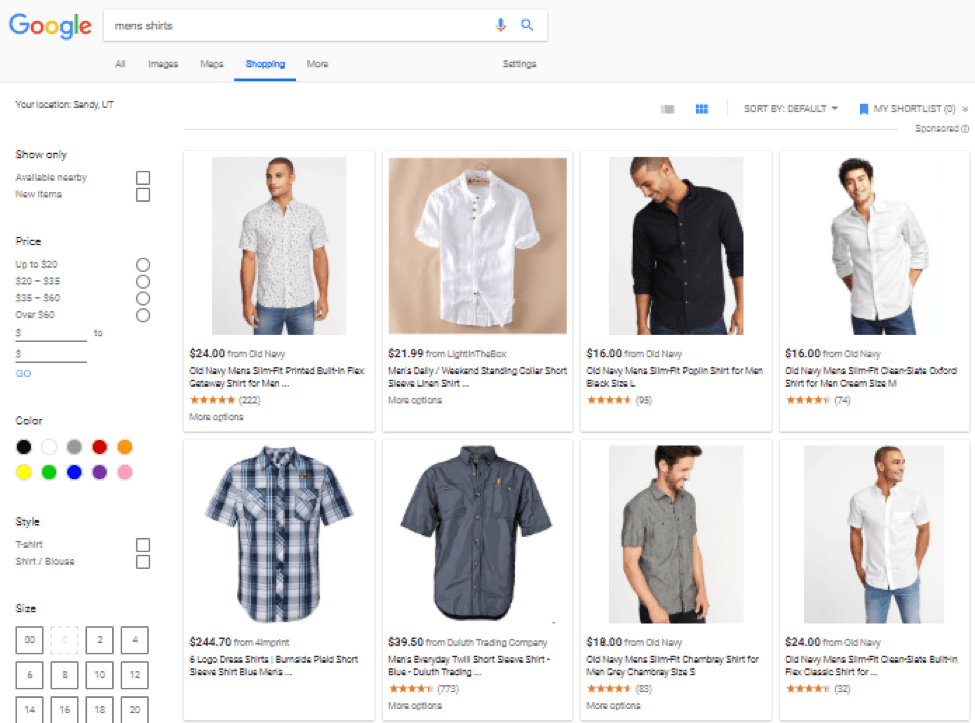
This type of ad content can help you stand out and tap into your audience’s desire for visual content. Some companies report an 1,800% return on investment for this type of ad. Your mileage may vary, but it’s a clear winner for your ad content needs.
While the type of ad you create and promote is largely dependent on your niche, the key takeaway is that you need to create something that’s compelling. It’s the final crucial step in mastering how to do affiliate marketing without a website.
How to Do Affiliate Marketing for Free
If you can’t afford to run ads or pay for web hosting right now, look into affiliate marketing methods that don’t require you to spend money. Popular strategies include:
Posting in Facebook groups
Join Facebook groups related to your niche and start building relationships by commenting on others’ posts. Once people start trusting you, you can start recommending your affiliate products to earn commissions
Including affiliate links in email
Do you have an email list? If yes, then you already have a channel to share affiliate links without any charge. You can insert product links in your newsletters that take people to the merchant’s website. The more targeted your email list, the higher the number of people who will check out your affiliate offers.
Including affiliate links in YouTube videos
YouTube is an excellent platform for affiliate marketing and doesn’t cost anything to use. You can start earning commissions by creating videos featuring the products you enjoy. Make sure to add affiliate links in the description so people know where to make a purchase. Don’t have a lot of activity on YouTube? Then check out these 18 easy and free ways to get more YouTube views to kickstart your affiliate marketing journey.
Conclusion
Finding merchants to partner with, high commission affiliate programs, or profitable affiliate marketing jobs hinges on the steps discussed in this article
You have to leverage the best strategies to attract an audience and build relationships with them. No matter what your approach is, the steps in this article will help make your journey as an affiliate marketer much easier in the long run.
Summary: How to Do Affiliate Marketing in 2021
- Pick a product niche
- Test market demand
- Analyze the competition
- Research affiliate programs
- Select your affiliate marketing methods
- Create and publish top-notch content
Want to Learn More?
- 10 Things To Do Before Spending Money On Your Business
- How to Make Money With Affiliate Marketing
- An Inside Look at the Mindset of a Successful Entrepreneur
- The Ultimate Guide to Brand Strategy



